Ijraset Journal For Research in Applied Science and Engineering Technology
- Home / Ijraset
- On This Page
- Abstract
- Introduction
- Conclusion
- References
- Copyright
Comparative Analysis of Mechanical Properties of Natural Fiber-Reinforced Polymer Composites
Authors: Varun K S, Swamy S R, Darshan C
DOI Link: https://doi.org/10.22214/ijraset.2024.65153
Certificate: View Certificate
Abstract
This paper aims to carry an explorative, comparative case study of the nature and behavior of natural fiber reinforced polymer composites (NFRPCs) with special reference to the most commonly used fibers like flax, hemp, jute and coir. Tensile strength, impact strength, flexural strength, thermal stability and moisture absorption characteristics that include are described as follows in order to evaluate the utility of each fiber type. The experimental findings show that most of the fibers derived from flax and hemp possess higher tensile and flexural strength, along with more thermal stability, which make them suitable for uses in structural parts of the automotive and aerospace industries. On the other hand, jute and coir fibers have moderate tensile strength, with higher percentage of water absorption and therefore suitable for products such as packaging and insulation. These are in line with the environmental and economic benefits of NFRPCs to synthetic composites that should encourage their adoption as green products in several sectors. Fiber selection in application-oriented manufacturing is also facilitated in this analysis depending on the mechanical needs.
Introduction
I. INTRODUCTION
There is increased interest in natural fiber-reinforced polymer composites (NFRPCs) due to their eco-friendly and lightweight characteristics superior to synthetic fiber composites. In today’s world, felt demand for environmentally friendly products the use of natural fibers such as flax, jute, hemp, sisal, kenaf, and coir fiber in automotive, aerospace, construction, and packaging industries gives many advantages due to their biodegradability, renewability, and low emission industries. When used in conjunction with polymer matrices (epoxy, polypropylene, polyester…), such fibers give composite products with various mechanical characteristics for multiple applications. However, the mechanical performance of NFRPCs depends highly on the type, treatment, orientation, and matrix material Tensile strength and modulus of elasticity of the NFRPCs change remarkably as the fiber type, treatment, and orientation and the matrix material hence require comparative analysis to arrive at the most appropriate material to be used in a particular application.
The tensile strength, flexural strength, impact resistance, and thermal stability of NFRPCs characterize the behavior of these materials as appropriate for certain corners. The flax and hemp fibers usually have greater tensile strength and modulus and are well suited to structural applications. In contrast, sisal and coir that have comparatively low strength are useful for light-duty applications. In addition, the fiber-matrix interface characterizes overall performance in terms of the interaction between the fibers and the polymer matrix, and the ability to transfer load and endure stress.
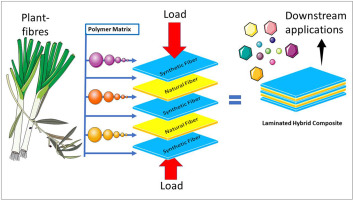
Figure-1: Mechanical attributes of natural-synthetic fibres in polymer composites
Fiber itself possesses a certain amount of hygroscopicity as this is a natural fiber that swells upon contact with moisture and therefore decreases the firmness of the fibre-matrix system, especially if the product is to be used in areas of high humidity or outside. This problem is normally solved by chemical treatments such as alkali or silane to increase interfacial adhesion, mechanical properties, and water resistance. Also, the thermal properties of these composites are different those based on flax fibers are characterized by higher thermal stability that expands the range of their application in cases where composites are exposed to high temperatures. Comparing them to other types of continuous fiber reinforcements such as glass or carbon fiber reinforced plastics, NFRPCs have comparatively lower tensile strength, but they are biodegradable, less costly, and have lower gravimetric densities. For these reasons, these composites are applied where the sustainability of the product and performance is of utmost importance. Therefore, the present work aims to focus on the mechanical characteristics of relevant natural fibers, and, thereby, provide an optimum recommendation of corresponding natural fibers in terms of performance requirements, environment, and cost factors, thus pointing out the prospects and challenges of NFRPCs in different fields.
II. TYPES OF NATURAL FIBERS USED IN COMPOSITES
The natural fibers incorporated in composites are biodegradable and normally plant-based. While each fiber type is chemically different, the specific proportion of cellulose, hemicellulose, and lignin present in the fiber affects the mechanical characteristics of the fiber and the resultant composites in terms of strength, stiffness, durability, and water resistance [1]. Here’s an overview of commonly used natural fibers in polymer composites:
- Flax: Flax fibers are also characterized by high cellulose content, making them strong and stiff, the two important properties of a suitable reinforcement for polymers. This revealed that the tensile strength and flexural strength of flax-reinforced composites are very high, and they are widely applied in vehicle and aircraft fields as load-bearing materials.
- Hemp: Hemp fibers are another heavy-duty material that provides good tensile properties, stiffness, and impact strength. Compared to other natural fibers, hemp fibers are superior in particular conditions due to their poor moisture absorption. These characteristics, along with a good strength-to-weight ratio, explain why hemp composites are used in the automobile and construction industries.
- Jute: Jute fiber gained popularity because this is cheap and has reasonable mechanical characteristics. Although they are not as strong or stiff as flax or hemp composites, they can be used where costs and procurement are important factors, such as single-trip containers and low-stress structural parts.
- Sisal: Sisal fiber provides moderate strength and stiffness and has good abrasion resistance. Sisal-reinforced composites are widely incorporated in the construction industry and automobile industries where interior trims are always desired due to reasonable mechanical properties allied with good wear-resistant characteristics.
- Kenaf: Consequently, kenaf fibers have reasonably high tensile strength and thermal stability. Kenaf composites have relatively lower lignin content and hence are used to produce lighter composites that are equally strong. Such fibers are most useful for non-structural applications because of their production characteristics.
- Coir: Coir fibers which are derived from coconut husks possess high lignin caners that possess less stiffness and strength but are extremely water resistant. Non-woven coir-reinforced composites are employed in applications wherein this is necessary to have resistance to water-like packaging and construction uses while they offer relatively low tensile and flexural strength compared to other fibers.
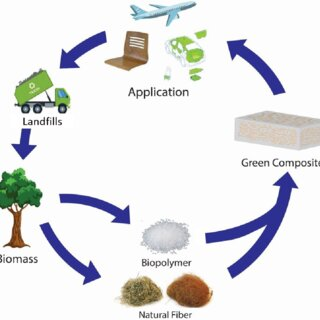
Figure-2: Classification of Natural Fibers
Different fiber types have different properties impacting on NFRPCs, therefore, this is important to understand how each type of fiber performs under conditions of its planned use in mechanical and environmental aspects [2].
III. MECHANICAL PROPERTIES VARIABILITY
Natural fiber-reinforced polymer composite, materials have varying mechanical properties, based on fiber type, fiber surface modification, fiber direction, and polymer matrix type [3]. This variability is central in dictating the ability of NFRPCs for different applications because this influences such vital parameters as tensile strength, flexural strength, and impact strength.
- Fiber Type: Each botanical fiber like flax, hemp, jute, sisal, and coir carries its inherent mechanical properties owing to its inherent species composition. For instance, flax and hemp were shown to have higher tensile and flexural strength compared with sisal or coir fibers and are as such better suited for use in load-bearing assembly. For these reasons, though cost-effective compared to polypropylene, jute has comparatively low strength and is more often used for applications where strength is not a practical necessity.
- Fiber Treatment: Alkali or silane treatments can also increase the mechanical characteristics of NFRPCs due to better interaction between the fiber and polymer matrix. For instance, the alkalization of alkali-sensitive fibers reduces the fiber’s surface’s natural blend of waxes and oils, thus facilitating a better combination with the matrix and leading to higher tensile strength and stiffness. Untreated fibers, on the other hand, are likely to have poor interfacial adhesion that will result in poor mechanical properties and shortened life span.
- Fiber Orientation: The orientation of the formed fibers on the composite also affects its mechanical characteristics. The composites with unidirectional fibers show improved mechanical characteristics in the direction of the fiber, particularly tensile strength, and are therefore suitable for use in applications where strength is required in one direction. While aligned fibers produce high strength in one direction, randomly oriented fiber material has more or less equal balanced strength in every direction albeit low.
- Polymer Matrix Compatibility: The nature of the polymer matrix, for instance, thermosetting polymers like epoxy or thermoplastics like polypropylene, also influences the composite. For instance, epoxy-based NFRPCs often possess greater stiffness and strength than polypropylene-based composites probably due to enhanced flexibility.
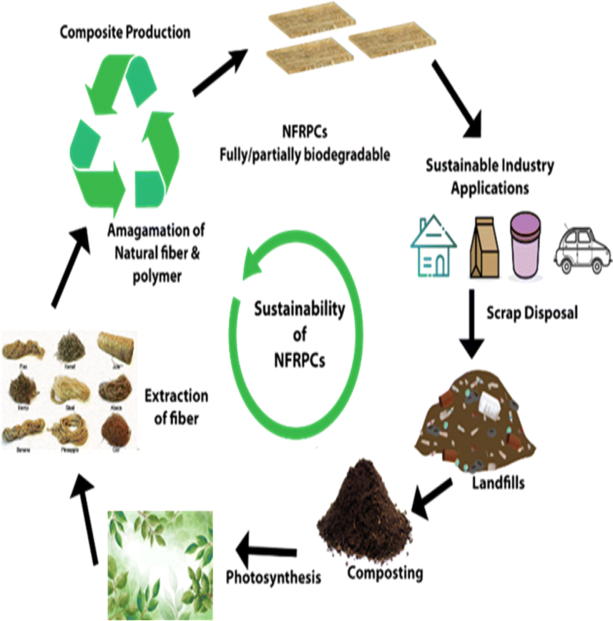
Figure-3: A schematic block diagram of the sustainability of Natural Fibre Reinforced Polymer Composites
With such variation, this is possible to control the mechanical properties of NFRPCs to achieve desired standards. This can be appreciated that for structural applications where high strength, as well as great durability, is desired, treated flax or hemp fibers in an epoxy matrix with unidirectional fiber orientation may be possible [4]. However, natural fibers such as jute or sisal without any treatment in a polypropylene matrix with a random fiber alignment may only be adequate for low-cost applications or indirect load applications like packaging or insulation. This customization potential is one of the essential differences of NFRPCs and one that brings the ability to tailor the performance of this mechanism closely to the needs of different applications.
IV. TENSILE STRENGTH AND STIFFNESS
Tensile strength and stiffness are two major mechanical parameters for assessing the potential of NFRPCs particularly for applications that involve stretching loads. The tensile strength of the material shows the maximum stress that can be applied to this while pulling to cause failure, while the stiffness of the material depicts the extent to which it can resist change in size or shape under load.
Amongst the natural fibers, flax & hemp have high tensile strength and modulus of rupture that renders them suitable for structural applications. More specifically, flax fibers have a very high cellulose content and high tensile strength which enables flax-reinforced composites to carry quite large loads before failure [5]. Likewise, the mechanical properties of hemp fibers provide evenly approximated tensile strength and stiffness, thus the reinforced composite from hemp is used where the plane stiff material is needed. These property profiles make flax- & hemp-based NFRPCs suitable for load-bearing applications such as automobile parts, construction subsequently employments, and some aerospace parts.
|
Fiber Type |
Polymer Matrix |
Tensile Strength (MPa) |
Reference Value (MPa) |
|
Flax |
Epoxy |
85.3 |
70–110 |
|
Hemp |
Polypropylene |
62.4 |
50–90 |
|
Jute |
Polyester |
45.6 |
30–60 |
|
Coir |
Polypropylene |
32.8 |
20–40 |
Table-1: Tensile Strength of Natural Fiber Composites
On the other hand, fibers like jute and coir have relatively lower tensile strength and stiffness values. Incidentally, while a jute fabric reinforced composite is cheaper and lighter than those reinforced with flax or hemp fabrics their first law mechanical properties are inferior. This tends to confine the use of jute yarn into areas where this acts only as an infill or does not strictly demand high tensile strength. They are low in tensile strength anyway due to the high density of lignin compared to soft flexible coir fibers derived from coconut husks. This feature makes this property suitable in instances where impact energy or water resistance is required but limits the use of these products in structural applications where tensile forces shall be applied.
In structural application, an optimum fiber type with higher tensile strength and stiffness is desirable in a composite design to handle stretching force without getting too deformed or failing [6]. As a result, flax- and hemp-reinforced composites are employed for stiffness and strength applications, while sites with jute and coir can be used in regions where high tensile strength is not the principal concern, but flexibility, and, therefore, cost, are priorities. The ratio of tensile strength to stiffness evident in natural fibers such as flax and hemp is the retention of the versatility of the NFRPCs for demanding engineering purposes while underlining the advantages of sustainable material.
V. IMPACT RESISTANCE
Toughness, or the ability of an NFRPC material to withstand sharp loads without fracture, is an essential performance parameter for certain categories of natural fiber-reinforced polymer composites. This property points to the energy-absorbing capacity of a composite under impact as this enhances the capacity of the composite to withstand wear and damage under dynamic loads. The principal determinants of impact resistance in NFRPCs are the type of fiber employed, fiber-polymer adhesion, and the distribution of the fibers in the polymer matrix [7]. Among all the available hemp fibers, this was found that they have good impact properties, and therefore, the use of hemp-reinforced composites is suitable for the application where resistance to impact loads is required. Hemp has a natural ability to absorb impact energy and hence the resulting composites are relatively dynamic and thus able to recover their original state under dynamic stress loads. This property is useful in industries such as automobile and construction since these materials experience impact load and have to last for a long period. For example, the use of hemp-reinforced NFRPCs is often in car interiors, panels, and other parts that may experience accidental strikes or vibrations.
|
Fiber Type |
Polymer Matrix |
Impact Strength (kJ/m²) |
Reference Value (kJ/m²) |
|
Flax |
Epoxy |
15.2 |
12–18 |
|
Hemp |
Polyester |
12.3 |
10–15 |
|
Jute |
Polypropylene |
8.7 |
6–10 |
|
Coir |
Polyethylene |
5.1 |
4–7 |
Table-2: Impact Strength of Natural Fiber Composites
This is in this region that the impact resistance is determined by the quality of the bond between the fibers and the polymer matrix. Increased continuity between the fibers and matrix is desirable because a well-detached fiber can only contribute little to the energy absorption capacity of the composite before failure. This adhesion is often enhanced by treating the fiber with chemicals such as alkali or silane, especially since flax or jute, for instance, naturally has a poorer interface adhesion with the polymer matrices than other fibrous materials. These treatments thus improve the interfacial interaction between the fabric and the matrix and, in the process, also improve the resistance of the resulting composite to impact as well as its overall toughness, two features characterized by increased durability.
Flax is another fiber that provides moderate impact strength and again involves lower values than hemp [8]. While coir fibers exhibit very high absorption resistance, they possess comparatively lower impact modulus since they are more flexible by structure thereby unreasonably applying coir-reinforced composite in numerous applications that do not require high impact strength.
In many applications where the strength and toughness of materials are critical, NFRPCs with hemp fibers are utilized because of their toughness and capacity to dissipate energy. Such properties show that natural fiber composites are flexible, and the engineers and designers can identify suitable fibers as per the application’s need of IS, achieving a balance of strength and sustainability.
VI. FIBER-MATRIX INTERFACE AND ADHESION
Among various parameters of NFRPCs, the fiber-matrix interface plays an important role in mechanical characteristics. The nature of the interface, or bond, between the fibers and the polymer matrix controls the extent to which stress is transferred through the composite. The good interfacial adhesion between the different layers enables stress transfer from the least strong component (matrix) to the strongest component (fibers) thus producing a composite with improved tensile strength, stiffness, and impact strength. On the other hand, if the adhesion is not good, then fibers pull out, load transfer is not efficient, and the structure fails earlier losing much of its mechanical properties.
Natural fibers in their nature contain foreign matter on their surface, waves, and oils that act as barriers to the correct interactive bonding with the polymer matrix. This adhesion is effectively enhanced by the use of chemical treatments like alkali (NaOH) and silane treatments to improve the bonding capacity of the fiber surface. Lum, for example, alkali treatment removes impurities, waxes, and oil and increases the surface roughness of the fibers [9]. This not only increases the area of the fiber to be bonded but also opens a larger number of reactive sites on the surface of the fiber, thus making this better compatible with the polymer matrix. Fibers treated with alkali exhibit better tensile strength and impact strength because the better adhesion between the fibers and the matrix creates a stronger stress-bearing structure in the composite material.
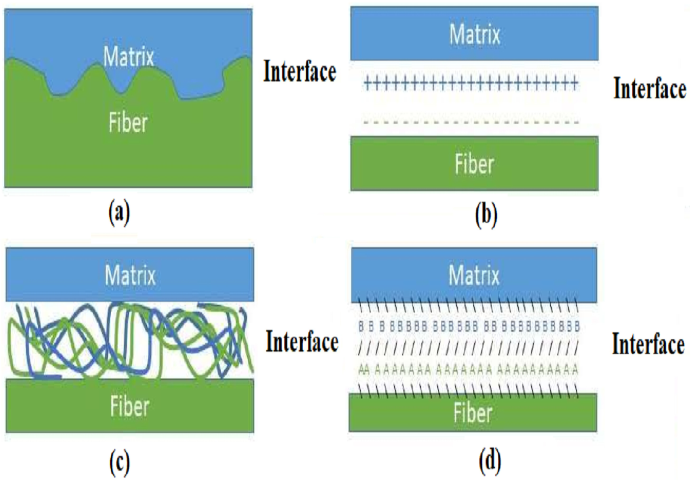
Figure-4: Enhancing Fiber-Matrix Interface and Adhesion in Polymer Composites
Another method used for improving the F-M interface is the silane treatment whereby silane coupling agents are added to the fiber and polymer which form a chemical bond across the fiber and polymer. The silane molecules react with the hydroxyl groups of the fiber and provide an improved mechanical bonding at the interface. This treatment enhances both the water resistance and mechanical strength of the fibers thus silane treated fibers are suitable for use in areas where natural fibers may be exposed to valve humidity such as in greenhouses.
These treatments are of great importance since most applications require this load transfer within the composite for endurance and strength. When improving the interfacial adhesion between the fibers and the matrix, the other mechanical properties of the NFRPCs are also improved and their use is expanded in high-stress industries such as automotive, construction, and sporting goods industries [10]. Not only does strong fiber-matrix adhesion enhance the mechanical characteristic of the composite, but the durability of the composite is also enhanced, leading to the use of chemically treated natural fibers as potential renewable resource materials in industries. Therefore, a good design of the fiber-matrix interface is essentially required to enable natural fiber composites to achieve the intended structural applications.
VII. INFLUENCE OF POLYMER MATRIX TYPE
The choice of polymer matrix in natural fiber-reinforced polymer composite (NFRPC) influences the mechanical characterization and performance of the composite. The polymer matrix holds the natural fibers in place while holding applied and distributed loads and providing a physical barrier for the fibers against adverse conditions. There are two broad categories of resins, thermosets, for example, epoxy, and polyester, while thermoplastics are polypropylene, and polyethylene among others, and each matrix confers different properties to the composites in terms of strength, and flexibility among others.
Thermosetting resins as matrices, including epoxy, possess high strength and stiffness hence suitable for structural applications. Epoxy is especially used in NFRPCs because of its high compatibility with natural fibers to produce a stiff composite bearing heavy load. Its high-performance chemical and moisture resistance is important for the durability of the composite in aggressive environments [11]. The epoxy matrices are ideal for creating composites with high tensile and flexural strength: they are applied where high rigidity and service durability are needed: in aerospace engineering, automobile-building, civil engineering, etc. Nonetheless, they have low flexibility, and cannot be reused in a different shape once they are hardened or vulcanized and therefore are less recyclable compared to thermoplastics.
|
Fiber Type |
Polymer Matrix |
Flexural Strength (MPa) |
Reference Value (MPa) |
|
Flax |
Epoxy |
95.8 |
80–120 |
|
Hemp |
Polyester |
78.2 |
65–90 |
|
Jute |
Polypropylene |
56.4 |
40–70 |
|
Coir |
Polyethylene |
34.7 |
20–50 |
Table-3: Flexural Strength of Natural Fiber Composites
On the other hand, thermoplastic matrices such as polypropylene and polyethylene are more flexible and strongly resistant to impact. They can also be remolded as they are thermoplastic and an ideal choice in terms of recycling. Thermoplastic composites have lower strength and stiffness as compared to thermosets, but they provide good energy absorption so they find application in flexible parts of automobiles, consumer products, packaging, and automotive interiors. Polypropylene for instance has low density, its cost is relatively low and this is not very brittle as the thermosets, however this has the disadvantage of needing the application of chemical treatments to have a good interfacial adhesion with natural fibers since these fibers do not have good wetting characteristics with thermoplastic polymers [12]. This is in light of the above cross-tabulation that the selection between the thermoset and the thermoplastic matrices depends on the application of the composite. In cases where very high strength and especially for load-bearing applications then thermosets such as epoxy are used since they provide stiffness and toughness. On the other hand, flexible, recyclable, and high-impact strength materials are preferred where flexibility, recyclability, and impact strength which are inherent to the thermoplastics are desirable. The choice of the right polymer matrix allows engineering the NFRPC to achieve necessary performance levels thus expanding their use in sustainable material development.
VIII. MOISTURE ABSORPTION AND DURABILITY
Among all the properties of these NFRPCs, one critical aspect is moisture absorption, which affects directly the service life, and mechanical performance of these composites in humid or wet conditions. Natural fibers are hydrophilic such that they will swell when they come into contact with moisture from the ambient atmosphere [13]. This process contributes to the swelling of the fibers, which in turn reduces the load-bearing strength of the fibers, the interfacial adhesion, dimensional stability, and the general durability of the resulting composite.
Flax and jute fibers are more hydrophilic and absorb more moisture than any other fibers because cellulose has a high affinity with water molecules. This seems that when such fibers are exposed to moisture, they swell and exert pressure on the other components of a given composite, resulting in micro cracks and eventually delamination whereby the fibers start pulling away from the polymer matrix. This delamination compromises the load transfer capability between the fibers and the matrix the mechanical properties such as tensile strength and stiffness are negatively affected. A person cannot reside in these composites for an extensively long period perhaps in the long run due to the further weak bond between fiber and matrix as a result of moisture penetration exposed to moisture over and over again exposing the composite more to wear.
Therefore, others such as sisal and coir s have comparatively low moisture absorption because of high lignin content and hence low hydrophilic nature. This characteristic enhances the thermal stability of sisal- and coir-reinforced composites in service environments that experience changes in the moisture content. Coir fibre in particular has natural water resistance features; this makes coir-based composites more durable to humidity and more appropriate to be used in applications that may be exposed to water such as marine or exterior construction.
|
Fiber Type |
Polymer Matrix |
Moisture Absorption (%) |
Humidity Exposure (Hours) |
|
Flax |
Epoxy |
7.4 |
48 |
|
Hemp |
Polypropylene |
6.1 |
48 |
|
Jute |
Polyester |
10.5 |
48 |
|
Coir |
Polyethylene |
9.2 |
48 |
Table-4: Moisture Absorption Rate of Natural Fiber Composites
Due to the tendency of natural fibers to absorb moisture, several treatments of the fibers are normally carried out to improve the fiber’s capability of resisting water. Techniques such as acetylation and silane treatments are some of the treatments that can be used on the fiber surface to decrease the hydrophilic nature of the fibers and also enhance the fiber-matrix interfacial bonding [14]. These treatments lower the composite’s moisture uptake rate, thus improving its resistance and dimensional stability in wet milieus.
Knowledge of the moisture absorption characteristics of each fiber assists in determining the fiber type and surface finish suitable for a particular use. This is therefore important to select fibres with less moisture uptake or increase the fibre-matrix interface strength in a moist environment for the enhanced performance of the composite hence making the NFRPCs suitable for a broader application.
IX. THERMAL STABILITY
Thermal stability is a significant parameter before exposing the natural fiber-reinforced polymer composites (NFRPCs) to high-temperature applications. This defines a composite’s capability to sustain its physico-mechanical characteristics and the high-temperature stability of its constituent material when exposed to heat. NFRPCs have variable thermal stability depending on the type of natural fiber used; fibers lose their properties at different temperatures because of variations in their chemical constituents.
Flax and hemp are common fibers, which have relatively higher thermal stability than other fibers such as jute or coir. The former are higher in cellulose content and lower in lignin content helping them to have higher rigidity. The o-PA reaction takes place with cellulose, which is the main component of natural fibers, thus providing structure to the fiber, while lignin which is a less thermally stable component starts depolarizing at comparatively low temperatures [15]. Flax and hemp which, have the lowest lignin content can be used in temperature-sensitive applications because they have a higher BTU rating before they are decomposed.
|
Fiber Type |
Onset Decomposition Temperature (°C) |
Peak Decomposition Temperature (°C) |
|
Flax |
280 |
360 |
|
Hemp |
260 |
340 |
|
Jute |
240 |
320 |
|
Coir |
230 |
310 |
Table-5: Thermal Stability (Decomposition Temperature) of Natural Fiber Composites
In car components or structures, construction materials, or electrical boxes, the materials might be subjected to variable or higher temperatures. To achieve these characteristics, researchers have had to use fibers such as flax and hemp in these composites in a bid to ensure that the material is safe and can withstand the harsh conditions in as much as this would augment the lifespan of the product. Such fibers also ensure that these materials cannot easily degrade through thermal rejection and your options cannot expand to the point of warping from heat.
On the other hand, low Dahlgren index fibers such as jute and coir fibers show lower thermal stability resulting from higher lignin content. However, if these fibers are exposed to high temperatures, their degradation increases, and as a result the strength of the fiber-matrix interface reduces [16]. Therefore, jute and coir composites may not be as suitable for high-temperature applications if no further stabilizing process is incorporated.
For better performance and thermal stability of NFRPCs, chemical treatments such as heat stabilization and fiber surface modification are carried out whereby the fibers gain enhanced resistance against thermal degradation. Therefore, for each type of fiber identification of their thermal properties and characteristics allows engineers and designers to choose fibers adequate to the thermal conditions of further application and expand the application field of natural fiber composites in different industries.
X. ENVIRONMENTAL AND ECONOMIC ADVANTAGES
A choice of the composite reinforced with synthetic fibers at this stage has considerable environmental and economic benefits making NFRPCs a more sustainable option. The other potential advantage the NFRPCs have over the current FRPCs is that the NFRPCs are biodegradable. Synthetic fibers like glass or carbon fibers flax, hemp, jute, and sisal natural fibers are renewable sources and can degrade naturally after a certain point of time thus having a low environmental impact. This biodegradability goes well with the current demands for environmentally friendly cash – including the continuously emerging demands as industries are put under pressure from environmental bodies to reduce their impacts on the environment.
Besides degradability, in most cases, the step of producing natural fibers is characterized by lower energy consumption and CO2 emissions compared to the production of synthetic fibers. Growing natural fibers needs light, water, and nutrients, and thus farming natural fibers is more ecological than the process of synthesizing synthetic fibers with the use of fossil fuels [17]. For example, the life cycle of natural fibers gives less pollution and improves the quality of air and water which adds to the material’s environmental advantage over synthetic. Also, in emissions control natural fibers are involved in the process of absorbing carbon dioxide during its growth, which synthetic fibers cannot perform well.
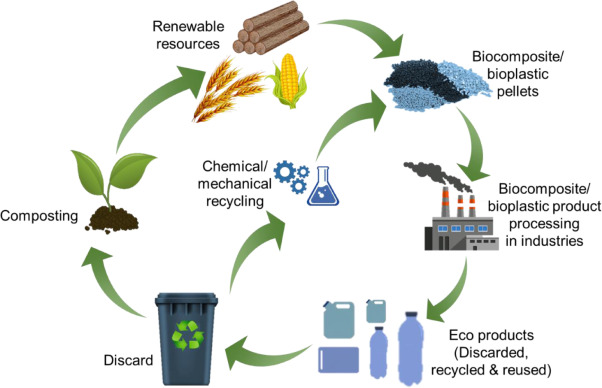
Figure-5: Circular Economy in Biocomposite Development
From an economic point of view, natural fiber materials remain cheaper than synthetic materials because of their availability and relatively simple treatment. Most of the natural fibers can be procured from the domestic markets which will cut down the cost of transportation and enhance the domestic farming industries. They also contribute to transportation costs when implemented within products particularly the automobile and construction industries where light weight is likely to translate to less fuel and high efficiency. For example, in the car industry, using lighter composite material increases fuel economy, which together with the life-cycle cost benefits, reduces emissions.
Natural fibers also predict fair strength and cost which makes them suitable for industries that look more into the economical aspect, apart from strength. For reasons of cost and sustainability, NFRPCs are suitable in areas such as automotive, construction, and packaging. Therefore, the selection of NFRPCs to create sustainable, lightweight, cost-efficient materials that can fulfill functional as well as sustainability requirements and advance the concept of circular economy [18].
XI. APPLICATION-SPECIFIC SUITABILITY
The nature of the specific application is one of how natural fiber-reinforced polymer composites (NFRPCs) are chosen; the fiber type to be used in a given industry has to be selected depending on the suitability of the application. Tensile strength, stiffness, impact resistance, and thermal stability are the four main mechanical properties of natural fibers; one or some of which may be better in one fiber when compared to another. Thus, making comparisons of these properties will be useful in helping manufacturers make sound decisions depending on the performance characteristics of the products to be made.
For instance, flax and hemp fibers are suitable for structural applications in industries such as automobiles and airplanes [19]. These fibers display improved tensile strength and stiffness that is desirable for components that are likely to experience mechanical loads, for instance, car door, seat geometry, and trim. The strength of the flax and hemp to weight ratio is a good advantage since a lighter composite reduces the overall weight of the vehicle hence improving fuel consumption and emissions – a critical factor for the auto industry. Further, because of their good thermal stability, the cells are capable of operating under temperature conditions in the aerospace system, making them suitable for use in the aerospace industry.
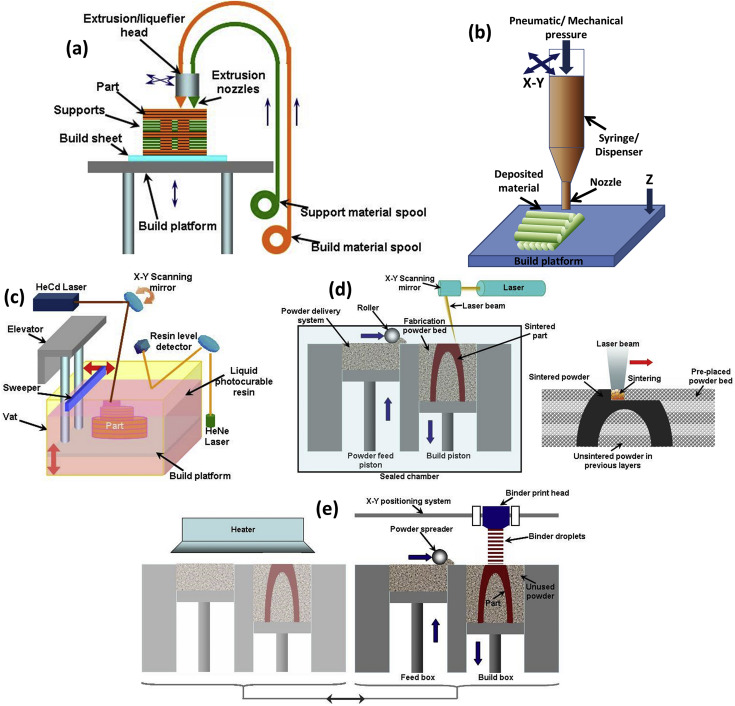
Figure-6: Additive manufacturing of natural fiber reinforced polymer composites
For instance, sisal and coir fibers are typically used for the second group of applications because of their moderate values of mechanical properties; these fibers are not needed for highly demanding structural applications and do not possess strong stiffness. Because the two composites have moderate strength and relatively higher moisture resistance, they are recommended for use in packaging materials, insulation, and consumer goods that are subject to low-stress levels. For example, coir-based composites are employed in packaging material and insulation products because they offer moderate strength and sturdiness to those items without adding more of a burden to the price.
This level of suitability for specific applications is very critical, especially, if the desire for high performance coupled with low cost is to be achieved [20]. In this way, choosing fibers considering mechanical properties comparison allows maximizing the application advantages of NFRPCs and achieving sustainable targets simultaneously. This structure guarantees that each fiber type is applied in the applications where exactly its properties best contribute to functional performance as well as environmental compliance for several industries including construction and automotive industries, consumer packaging, and home utilities.
Conclusion
Therefore, analyzing the mechanical properties of natural fiber-reinforced polymer composites (NFRPCs) this can be concluded that the application of these materials is very perspective in different fields. Different natural fibers like flax, hemp, jute, sisal, and coir fiber shown in this work possess specific characteristics that determine their performance in the resultant composite. Because of these characteristics such as tensile strength, stiffness, impact resistance, and thermal stability of these fibers, these fibers are selected for industrial uses depending on their characteristics. Flax and hemp fibers which are known for their superior mechanical properties make them suitable for structural applications like automotive industries, and aircraft industries where strength and lightweight are very important. On this premise, NFRPCs are viewed as a promising substitute for conventional synthetic materials because of their efficiency in boosting performance as well as the promotion of sustainability. Coir and sisal, for example, have moderate mechanical properties and, although they can offer good lifting and other mechanical uses, their main application would be in packaging and insulating, where the mechanical strength requirements are less pronounced. The polymer matrix constituent of NFRPCs should also not be left out; deciding on the matrix type as thermoset or thermoplastic influences the general mechanical properties of the composites. The other issues must also be addressable since factors like moisture absorption and fiber-matrix adhesion may alter the performance of the composite part in the field. Further, the environmental and economic benefits of NFRPCs increase their application as a more environmentally friendly product compared to currently popular PEEK materials. Considering the nature of natural fibers themselves as well as the fact that their processing does not require as much energy, NFRPCs are a responsible material for industries trying to conform to existing and emerging environmental legislation and customer demands. Consequently, the comparative analysis plays the role of a filter that distillates suitable natural fibers according to mechanical properties for their maximum effective use in targeted applications. Over time, industries keep on advancing, and they are always on the lookout for product solutions that not only satisfy functional needs but also possess features that are amiable to the environment; in this case, NFRPCs present themselves as plausible material choices. Further studies in this area will be required to answer questions on natural fiber composites to discover and open opportunities for its wide applicability in different industries.
References
[1] Khieng, T.K., Debnath, S., Ting Chaw Liang, E., Anwar, M., Pramanik, A. and Basak, A.K., 2021. A review on mechanical properties of natural fibre reinforced polymer composites under various strain rates. Journal of Composites Science, 5(5), p.130. [2] Alsubari, S., Zuhri, M.Y.M., Sapuan, S.M., Ishak, M.R., Ilyas, R.A. and Asyraf, M.R.M., 2021. Potential of natural fiber reinforced polymer composites in sandwich structures: A review on its mechanical properties. Polymers, 13(3), p.423. [3] Venkatesan, K. and Bhaskar, G.B., 2020. Evaluation and comparison of mechanical properties of natural fiber abaca-sisal composite. Fibers and Polymers, 21, pp.1523-1534. [4] Mohan Kumar, A., Rajasekar, R., Manoj Kumar, P., Parameshwaran, R., Karthick, A. and Muhibbullah, M., 2021. Comparative Analysis of Drilling Behaviour of Synthetic and Natural Fiber?Based Composites. Advances in Materials Science and Engineering, 2021(1), p.9019334. [5] Neto, J., Queiroz, H., Aguiar, R., Lima, R., Cavalcanti, D. and Banea, M.D., 2022. A review of recent advances in hybrid natural fiber reinforced polymer composites. Journal of Renewable Materials, 10(3), p.561. [6] Praveena, B.A., Buradi, A., Santhosh, N., Vasu, V.K., Hatgundi, J. and Huliya, D., 2022. Study on characterization of mechanical, thermal properties, machinability and biodegradability of natural fiber reinforced polymer composites and its Applications, recent developments and future potentials: A comprehensive review. Materials Today: Proceedings, 52, pp.1255-1259. [7] Karthick, M., Meikandan, M., Kaliappan, S., Karthick, M., Sekar, S., Patil, P.P., Raja, S., Natrayan, L. and Paramasivam, P., 2022. Experimental investigation on mechanical properties of glass fiber hybridized natural fiber reinforced penta?layered hybrid polymer composite. International Journal of Chemical Engineering, 2022(1), p.1864446. [8] Lokesh, P., Kumari, T.S., Gopi, R. and Loganathan, G.B., 2020. A study on mechanical properties of bamboo fiber reinforced polymer composite. Materials Today: Proceedings, 22, pp.897-903. [9] Nurazzi, N., Asyraf, M.R.M., Rayung, M., Norrrahim, M.N.F., Shazleen, S.S., Rani, M.S.A., Shafi, A.R., Aisyah, H.A., Radzi, M.H.M., Sabaruddin, F.A. and Ilyas, R.A., 2021. Thermogravimetric analysis properties of cellulosic natural fiber polymer composites: A review on influence of chemical treatments. Polymers, 13(16), p.2710. [10] Prabhu, P., Karthikeyan, B., Vannan, R.R.R.M. and Balaji, A., 2024. Mechanical, thermal and morphological analysis of hybrid natural and glass fiber-reinforced hybrid resin nanocomposites. Biomass Conversion and Biorefinery, 14(4), pp.4941-4955. [11] Kuan, H.T.N., Tan, M.Y., Shen, Y. and Yahya, M.Y., 2021. Mechanical properties of particulate organic natural filler-reinforced polymer composite: A review. Composites and Advanced Materials, 30, p.26349833211007502. [12] Ramachandran, A., Mavinkere Rangappa, S., Kushvaha, V., Khan, A., Seingchin, S. and Dhakal, H.N., 2022. Modification of fibers and matrices in natural fiber reinforced polymer composites: A comprehensive review. Macromolecular rapid communications, 43(17), p.2100862. [13] Mulenga, T.K., Ude, A.U. and Vivekanandhan, C., 2021. Techniques for modelling and optimizing the mechanical properties of natural fiber composites: A review. Fibers, 9(1), p.6. [14] Khan, Z.I., Arsad, A., Mohamad, Z., Habib, U. and Zaini, M.A.A., 2021. Comparative study on the enhancement of thermo-mechanical properties of carbon fiber and glass fiber reinforced epoxy composites. Materials Today: Proceedings, 39, pp.956-958. [15] Bachchan, A.A., Das, P.P. and Chaudhary, V., 2022. Effect of moisture absorption on the properties of natural fiber reinforced polymer composites: A review. Materials Today: Proceedings, 49, pp.3403-3408. [16] Khare, J.M., Dahiya, S., Gangil, B. and Ranakoti, L., 2021. Influence of different resins on Physico-Mechanical properties of hybrid fiber reinforced polymer composites used in human prosthetics. Materials Today: Proceedings, 38, pp.345-349. [17] Pappas, J.M., Thakur, A.R., Leu, M.C. and Dong, X., 2021. A comparative study of pellet-based extrusion deposition of short, long, and continuous carbon fiber-reinforced polymer composites for large-scale additive manufacturing. Journal of Manufacturing Science and Engineering, 143(7), p.071012. [18] Chandgude, S. and Salunkhe, S., 2021. In state of art: Mechanical behavior of natural fiber?based hybrid polymeric composites for application of automobile components. Polymer Composites, 42(6), pp.2678-2703. [19] Sampath, B., Naveenkumar, N., Sampathkumar, P., Silambarasan, P., Venkadesh, A. and Sakthivel, M., 2022. Experimental comparative study of banana fiber composite with glass fiber composite material using Taguchi method. Materials Today: Proceedings, 49, pp.1475-1480. [20] Saha, A., Kumar, S., Zindani, D. and Bhowmik, S., 2021. Micro-mechanical analysis of the pineapple-reinforced polymeric composite by the inclusion of pineapple leaf particulates. Proceedings of the institution of mechanical engineers, Part L: Journal of materials: design and applications, 235(5), pp.1112-1127.
Copyright
Copyright © 2024 Varun K S, Swamy S R, Darshan C. This is an open access article distributed under the Creative Commons Attribution License, which permits unrestricted use, distribution, and reproduction in any medium, provided the original work is properly cited.

Download Paper
Paper Id : IJRASET65153
Publish Date : 2024-11-11
ISSN : 2321-9653
Publisher Name : IJRASET
DOI Link : Click Here
 Submit Paper Online
Submit Paper Online

